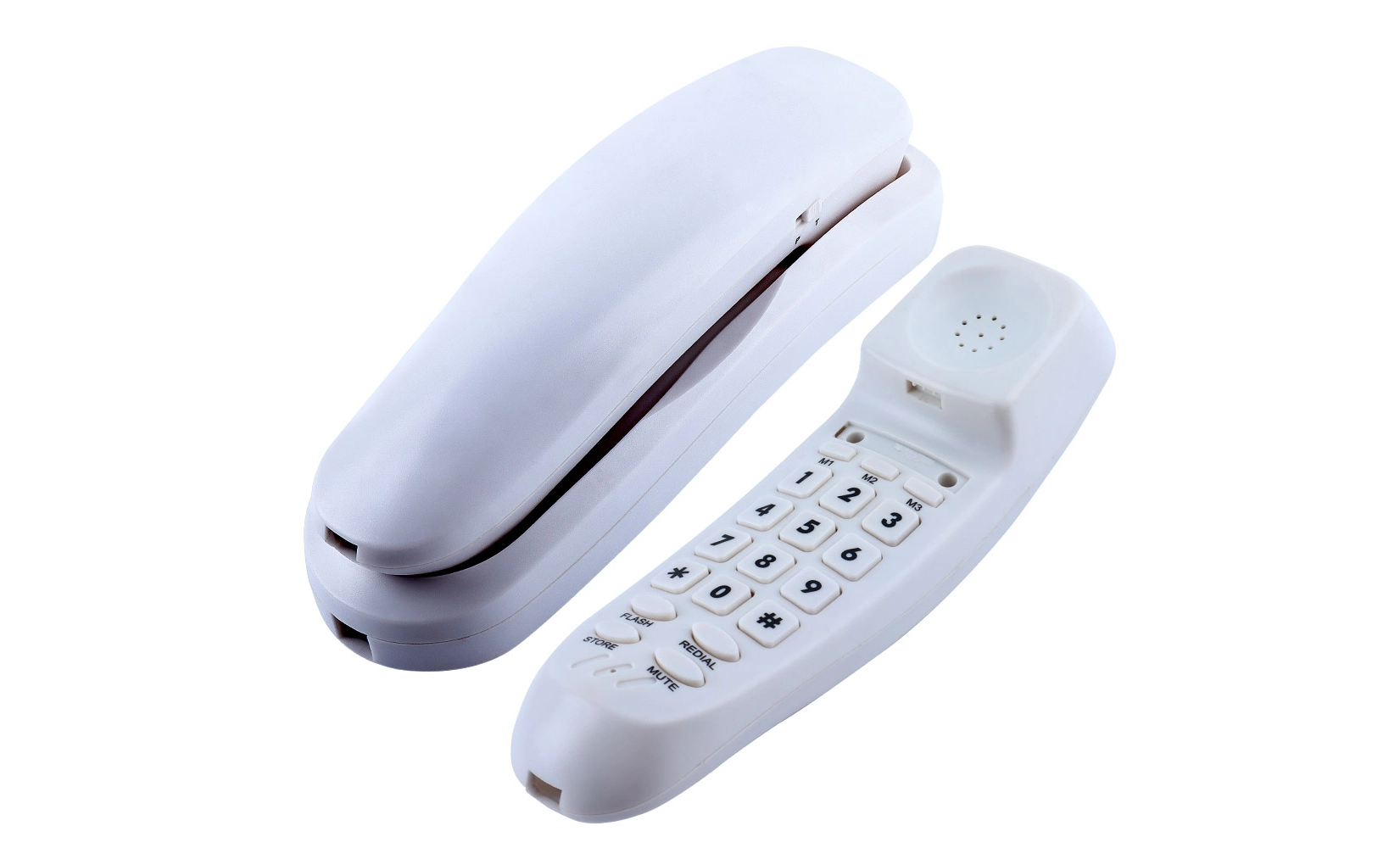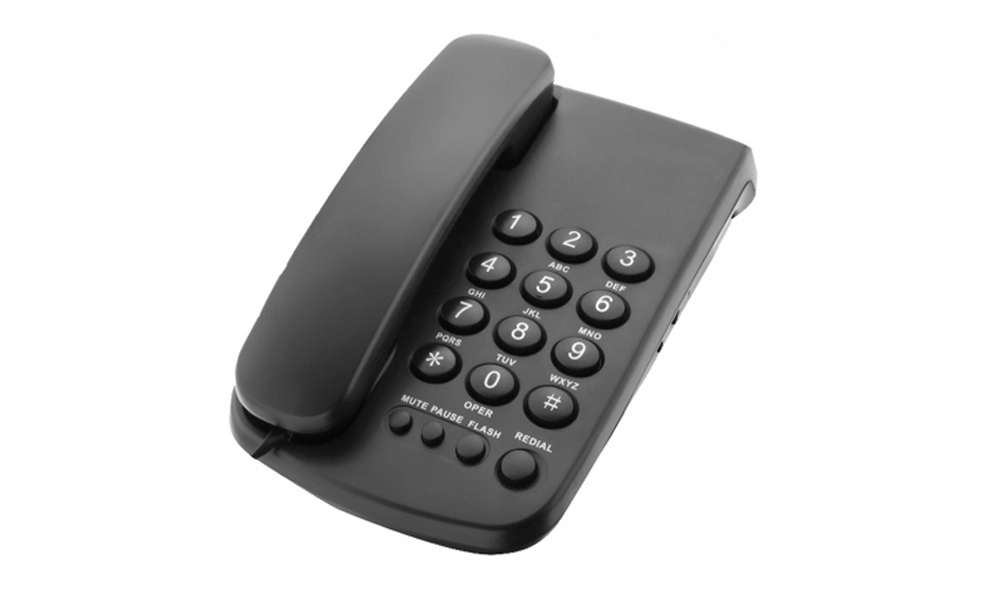The Evolution of Telephone Displays: From Analog to LCD
The journey of telephone displays has been nothing short of remarkable. In the early days, telephones were simple devices with no visual interface. As technology progressed, we saw the introduction of small LED displays, capable of showing basic information like the number dialed. However, the real game-changer came with the advent of LCD technology in telephones.
LCD (Liquid Crystal Display) screens brought a new dimension to telephone interfaces. These displays offered larger, more detailed visual information, transforming the way we interact with our phones. The transition from analog to LCD displays marked a significant leap in telephone technology, offering users more information at a glance and greater control over their communication devices.
Advantages of LCD Displays in Modern Telephones
LCD Display Telephones offer numerous advantages over their predecessors. The most apparent benefit is the clarity and readability of information. Whether it's caller ID, call duration, or menu options, LCD screens present this data in a clear, easy-to-read format. This clarity is particularly beneficial in low-light conditions or for users with visual impairments.
Another significant advantage is the amount of information that can be displayed simultaneously. Unlike simple LED displays, LCD screens can show multiple lines of text and even graphical elements. This capability allows for more intuitive menu navigation and the display of additional information like call logs, contact lists, and system settings.
Energy efficiency is another key benefit of LCD technology. These displays consume less power compared to other display technologies, contributing to the overall energy efficiency of the telephone. This is particularly important for cordless phones where battery life is a crucial factor.
Impact on User Experience and Productivity
The introduction of LCD displays in telephones has significantly enhanced user experience and productivity. With more information readily available, users can make informed decisions quickly. For instance, seeing the caller ID before answering allows one to prepare for the conversation or choose to let it go to voicemail if they're busy.
In a business setting, LCD Display Telephones have become invaluable tools for managing calls efficiently. Features like call waiting, call forwarding, and conference calling are much easier to use with a visual interface. Employees can manage multiple lines, transfer calls, and access company directories with greater ease, leading to improved communication flow and productivity.
For home users, LCD displays have made telephones more user-friendly. Programming speed dial numbers, adjusting ringer volume, or setting up answering machine messages becomes intuitive with on-screen prompts and menus. This ease of use has made advanced telephone features accessible to a broader range of users, enhancing the overall communication experience at home.
Key Features of Modern LCD Display Telephones
Modern LCD Display Telephones come packed with features that cater to diverse communication needs. Understanding these features can help users make the most of their devices and choose the right model for their specific requirements.
Advanced Caller ID and Call Management
One of the standout features of LCD Display Telephones is their advanced caller ID functionality. Beyond just displaying the caller's number, many modern models can show the caller's name, picture (if stored in the phone's memory), and even the location of the incoming call. This detailed information allows users to quickly decide how to handle incoming calls.
Call management features have also been significantly enhanced with LCD displays. Users can easily view their call history, including missed, received, and dialed calls. This feature is particularly useful for tracking communications and returning missed calls. Many LCD telephones also offer call blocking capabilities, allowing users to filter out unwanted calls and maintain their privacy.
 Customizable Interfaces and Programmable Keys
Customizable Interfaces and Programmable Keys
LCD Display Telephones often come with customizable interfaces, allowing users to tailor the phone's display to their preferences. This might include adjusting the brightness and contrast of the screen, changing the font size, or selecting different color schemes. Such customization options ensure that the display remains clear and readable for all users, regardless of their visual acuity or the ambient lighting conditions.
Programmable keys are another valuable feature of modern LCD telephones. These keys can be set up for one-touch access to frequently used functions or to speed dial important contacts. The LCD display plays a crucial role here, showing labels for these programmable keys, making it easy for users to remember their assigned functions.
Integration with Digital Phone Systems
In business environments, LCD Display Telephones often integrate seamlessly with digital phone systems. This integration enables advanced features like voicemail-to-email transcription, call routing, and even integration with customer relationship management (CRM) systems. The LCD display becomes a window into these complex systems, providing users with easy access to a wealth of communication tools and information.
For instance, in a call center environment, an LCD telephone might display customer information pulled from a CRM database as soon as a call comes in. This instant access to relevant data allows for more personalized and efficient customer interactions. Similarly, in a hotel setting, LCD phones can display guest names, room numbers, and even personalized welcome messages, enhancing the guest experience.
Choosing the Right LCD Display Telephone for Your Needs
Selecting the ideal LCD Display Telephone requires careful consideration of your specific needs and the features offered by different models. Whether for home or office use, understanding the key factors can help you make an informed decision.
Considerations for Home Use
For home use, the focus should be on user-friendly features and practical functionality. Look for LCD Display Telephones with large, easily readable screens. Models with adjustable font sizes and backlighting are particularly beneficial for users with varying visual needs.
Consider the range of features that would be most useful in a home setting. These might include:
- An extensive phonebook for storing family and friends' contact details
- A robust answering machine system with easy message retrieval
- Intercom functionality for multi-handset systems
- Energy-saving eco mode to reduce power consumption when not in use
For homes with elderly residents or those with hearing impairments, look for LCD telephones with hearing aid compatibility and visual ring indicators. Some models also offer picture-based speed dial options, which can be particularly helpful for users who may have difficulty remembering numbers.
Features to Look for in Business Phones
In a business environment, LCD Display Telephones need to offer more advanced features to support professional communication needs. Key features to consider include:
- Multi-line support for handling multiple calls simultaneously
- Conference calling capabilities
- Integration with office phone systems (PBX compatibility)
- Expandability to add more handsets as the business grows
- Advanced call management features like call forwarding, transfer, and hold
The display quality becomes even more crucial in a business setting. Look for phones with high-resolution LCD screens that can display detailed information clearly. Some business-oriented LCD telephones also offer customizable displays that can show company logos or important announcements.
Balancing Cost and Features
When choosing an LCD Display Telephone, it's important to balance cost with features. While high-end models offer a plethora of advanced functions, they may not be necessary for all users. Assess your needs carefully and prioritize features that will genuinely enhance your communication experience.
For home use, mid-range models often provide a good balance of features and affordability. These typically include essential functions like caller ID, a decent-sized phonebook, and basic call management features. For business use, investing in more advanced models can pay off in terms of improved productivity and professional call handling capabilities.
Remember to consider the long-term costs as well. Some features, like energy-efficient displays or robust build quality, may result in lower operating costs and longer device lifespan, making them worth the initial investment.
Conclusion
LCD Display Telephones have undoubtedly transformed the landscape of personal and business communication. Their clear, informative displays have made telephone usage more intuitive and efficient. From enhancing call management to providing easy access to advanced features, LCD telephones have become an integral part of modern communication systems.
As technology continues to evolve, we can expect further advancements in LCD telephone technology. Future developments may include even more integration with smart home systems, improved voice recognition capabilities, and perhaps even holographic displays. However, the core benefits of clarity, ease of use, and enhanced functionality that LCD displays bring to telephones will likely remain central to their appeal.
Whether for home or office use, choosing the right LCD Display Telephone can significantly improve your communication experience. By considering your specific needs and understanding the features available, you can select a device that not only meets your current requirements but also adapts to your future communication needs.
FAQ
Are LCD Display Telephones compatible with existing landline systems?
Most LCD Display Telephones are designed to work with standard landline systems. However, it's always best to check the specifications of the specific model you're interested in.
Can LCD Display Telephones work during power outages?
Many corded LCD Display Telephones can work during power outages as they draw power from the phone line. However, cordless models typically require electricity and may not function without power.
How long do the displays on LCD telephones typically last?
With proper care, LCD displays on telephones can last for many years. Most are rated for tens of thousands of hours of use.
Why Choose CHEETA for Your LCD Display Telephone Needs? | CHEETA
CHEETA, with its 18+ years of expertise in OEM/ODM services, stands out as a premier choice for LCD Display Telephones. Our state-of-the-art 1,200㎡ factory, equipped with 100+ skilled workers and 10 senior engineers, ensures high-quality production of 1,000 analog units daily. We pride ourselves on our rigorous 11-step inspection process, maintaining a failure rate below 1%. Our products adhere to CE, RoHS, FCC, and UN38.3 regulations, guaranteeing reliability and safety. For businesses seeking top-tier LCD Display Telephones, CHEETA offers unparalleled expertise and customization options. Contact us at allen@cheeta.com.cn to explore how our advanced manufacturing capabilities can meet your specific communication needs.

References
1. Smith, J. (2022). "The Evolution of Telephone Display Technology." Journal of Communication Devices, 15(3), 45-60.
2. Johnson, A. & Brown, T. (2021). "User Experience in Modern Telecommunication Devices." Human-Computer Interaction Review, 28(2), 112-128.
3. Lee, S. et al. (2023). "Energy Efficiency in LCD Display Telephones: A Comparative Study." IEEE Transactions on Consumer Electronics, 69(1), 78-90.
4. Garcia, M. (2020). "The Impact of Visual Interfaces on Business Communication." Corporate Communications Quarterly, 42(4), 301-315.
5. Wilson, R. (2022). "Accessibility Features in Modern Telephones: An Inclusive Design Approach." Assistive Technology Journal, 33(2), 155-170.
 LCD Display Telephones
LCD Display Telephones




